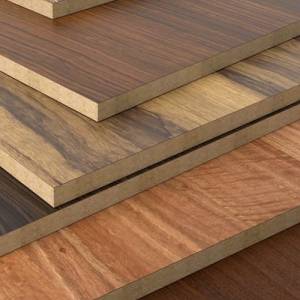Description
Block Board: A Versatile & Durable Wood-Based Panel
Block board, also known as blockboard, is a high-strength, engineered wood panel ideal for a wide range of applications where durability and stability are paramount. This description details its composition, advantages, and typical uses.
Construction:
Block board is constructed using a core of wood blocks, typically hardwood or softwood strips, precisely arranged edge-to-edge and glued together. These blocks are then sandwiched between two layers of thin plywood or veneer. This unique construction significantly enhances its strength and resistance to warping and sagging compared to other wood-based panels like plywood or particleboard.
Key Advantages:
- High Strength & Stability: The solid wood block core provides exceptional strength and stiffness, resisting warping, sagging, and bending under load. This makes it suitable for applications requiring significant structural integrity.
- Dimensional Stability: Block board exhibits excellent dimensional stability, meaning it's less prone to expanding or contracting with changes in humidity and temperature. This contributes to its long-term durability and prevents problems like cracking or splitting.
- Cost-Effective: While offering superior strength and stability, block board is often a more cost-effective alternative to solid wood for many applications.
- Versatile Finishing: The smooth surface of the veneer layers allows for easy finishing with paint, varnish, laminate, or other surface treatments. This allows for a wide range of aesthetic possibilities.
- Easy to Work With: Block board is relatively easy to cut, shape, and work with using standard woodworking tools.
- Excellent Screw Holding Capacity: The solid wood core provides excellent screw-holding power, making it suitable for applications requiring secure fastening.
Typical Applications:
- Furniture Manufacturing: Ideal for constructing sturdy furniture components like table tops, shelves, drawer bottoms, and cabinet doors.
- Interior Partitioning: Used for creating partitions and wall panels in interior spaces.
- Doors & Door Frames: Suitable for manufacturing doors and door frames due to its strength and resistance to warping.
- Flooring Underlayment: Can be used as a strong and stable base for flooring installations.
- Shopfitting & Display Units: Its durability and ease of finishing make it suitable for creating shopfitting and display units.
- Automotive & Marine Applications: (Certain grades) Offers strength and moisture resistance suitable for selected applications.
Specifications (Vary by Manufacturer):
- Thickness: Typically available in various thicknesses ranging from 6mm to 30mm or more.
- Sizes: Standard sheet sizes vary, consult manufacturer's specifications.
- Grades: Different grades are available depending on the quality of the wood blocks and veneer used. Higher grades generally offer better surface quality and durability.
Choosing the Right Block Board:
When selecting block board, consider the intended application, required thickness, strength, and desired finish. Always consult the manufacturer's specifications to ensure the chosen board meets the specific requirements of your project. Understanding the grade of the board is crucial to ensure you are getting the quality you need for longevity.
